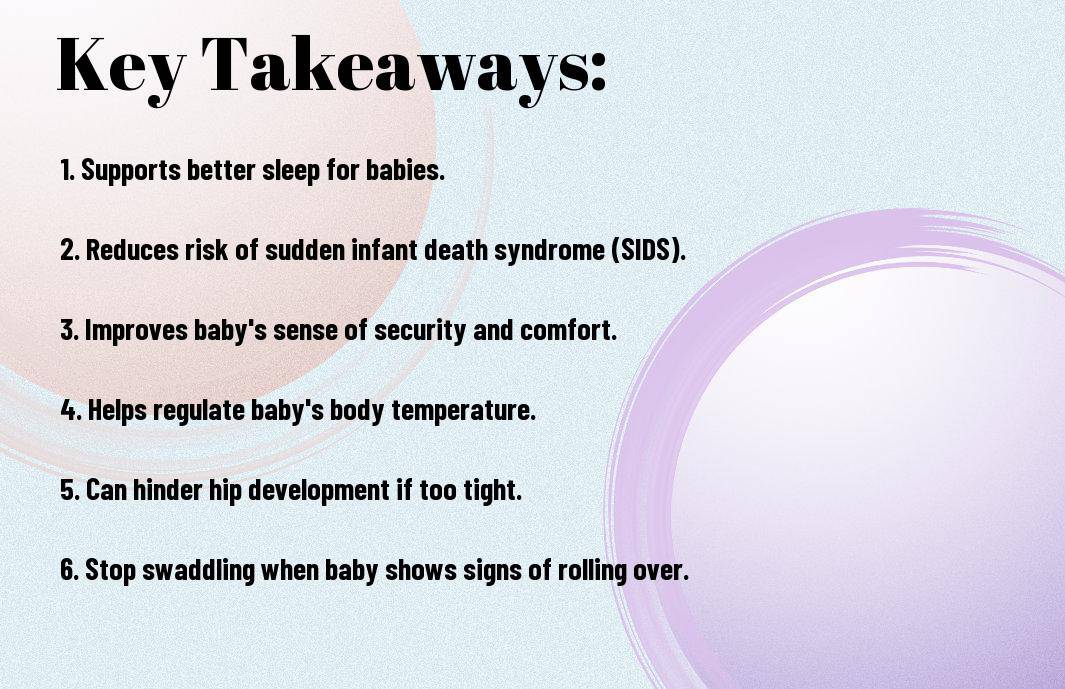tips, tricks and guides for parenthood
Swaddling has been a common practice for centuries to help soothe and comfort babies. However, it is important to be aware of the benefits and risks associated with this age-old tradition. In this blog post, we will explore the advantages of swaddling, such as promoting better sleep and reducing the startle reflex, as well as the potential risks if not done correctly. By following safe swaddling practices, parents can provide their little ones with a safe and comfortable environment for better sleep and development.

Swaddling provides infants with a sense of security and comfort by mimicking the snug environment of the womb. The gentle pressure of the swaddle around the baby's body can help soothe them, reducing their startle reflex and promoting a sense of calmness. Many babies find swaddling to be comforting, especially during the first few months of life when they are adjusting to the new world outside the womb.
Swaddling can help babies sleep better by promoting longer periods of undisturbed sleep. The feeling of being swaddled can prevent infants from waking themselves up due to their startle reflex, enabling them to stay asleep for longer stretches of time. This can be beneficial for both the baby and the parents, as everyone can get more restful sleep during the night.
It is important to note that while swaddling can be beneficial for promoting better sleep patterns, it is important to follow safe swaddling practices to reduce the risk of Sudden Infant Death Syndrome (SIDS).
One of the main risks associated with swaddling is the potential for overheating, which has been linked to an increased risk of Sudden Infant Death Syndrome (SIDS). When babies are swaddled too tightly or with too many layers, their body temperature can rise rapidly, leading to overheating. To reduce the risk of overheating and SIDS, it is important to use lightweight, breathable fabrics and to monitor your baby's temperature regularly while swaddled.
Another concern related to swaddling is the impact it can have on hip development and mobility. Swaddling too tightly or with the legs extended can increase the risk of hip dysplasia, a condition where the hip joint does not develop properly. This can lead to long-term mobility issues if not addressed early. It is important to swaddle babies with their legs in a natural, frog-like position to allow for healthy hip development.
Parents should also be mindful of the duration of time their baby spends swaddled, as prolonged restriction of movement can hinder the development of motor skills and coordination. It is recommended to gradually transition babies out of swaddling as they start to show signs of increased mobility and to provide plenty of opportunities for unrestricted movement to support their physical development.
When swaddling your baby, it is crucial to ensure you are using the correct technique to promote safety and comfort. Begin by laying a blanket in a diamond shape, folding down one corner. Place your baby on the blanket with their shoulders slightly below the fold. Tuck one corner over your baby and under their body, then fold up the bottom corner and tuck it behind your baby's shoulder. Finally, bring the remaining corner across and tuck it securely to prevent unraveling.
Knowing when to stop swaddling your baby is imperative to prevent risks associated with restricted movement. Most infants can safely be swaddled until around 2-3 months of age, or when they show signs of rolling over. Once your baby starts showing signs of rolling over, it is time to transition to alternative sleep practices to ensure their safety.
Swaddling can provide a sense of security and comfort to babies, leading to better sleep patterns and reduced crying. However, it is crucial to practice safe swaddling techniques to prevent any risks such as hip dysplasia and overheating. Always ensure that the swaddle is not too tight around the hips, allowing room for movement, and that the baby's head is uncovered to avoid overheating. It is also imperative to stop swaddling as soon as the baby shows signs of rolling over to prevent any suffocation hazards. By following safe swaddling practices, parents can reap the benefits of this age-old technique while keeping their little ones safe and snug.
A: Swaddling can help babies feel secure, calm, and help them sleep better. It can also reduce the startle reflex, which can disturb sleep.
A: Swaddling can prevent babies from rolling onto their stomach, which is a risk factor for Sudden Infant Death Syndrome (SIDS). It also helps regulate their body temperature.
A: Improper swaddling can lead to hip dysplasia or overheating. It is important to use a swaddle blanket that allows room for the baby's legs to move freely.
A: Swaddling can be safely done for newborns up to about 2 months old. Once the baby shows signs of rolling over, it is time to stop swaddling to prevent any risk of suffocation.
A: Always place the baby on their back to sleep when swaddled, ensure the swaddle is not too tight, and monitor for signs of overheating such as sweating or feeling hot to the touch.